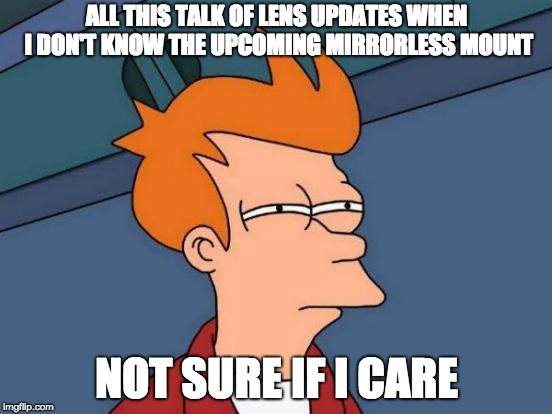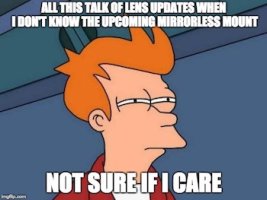i am not confused. Maybe i was not clear enough re the 2 types of Phase-AF:
A) detached, separate AF sensor [in the bottom of the mirrorbox, getting light via mirror/submirror/lens system] in DSLRs
B) in-sensor-plane phase-AF systems in mirrorless cameras, currently implemented in two sub-types: B1) dedicated AF pixels strewn across the sensor, not used for image and B2) DP-AF where each "pixel" is split in 2 half-"pixels" used to determine phase difference as well as in image capture itself.
ALL existing Canon EF glass is designed for use with type A) "detached, separate" Phase AF sensor. Especially all older design EF glass before LiveView was used in Canon. EF lenses have [different] sorts of AF drives and controlling electronics [presumably hardwired in older lenses and hard- plus firmware in newer, chipped lenses] optimized to focus best, fastest and precisest with DSLR-style Phase AF. Those lenses with micro-motor or Ring-/USM AF drive are *NOT* optimized for use in "LiveView"/mirrorless mode, not for type B1) nor for B2) DP-AF
Therefore existing EF lenses will be legacy on all future Canon FF mirrorless cameras, irrespective whether Canon uses EF mount or a new mount. These legacy EF lenses may and likely will be subject to various limitations in AF performance and functionality compared to new, "optimized for mirrorless/DP-AF" lenses. Most people seem to observe however, that even these lenses are not as fast-focussing in LiveView mode vs. regular DSLR-mode on eg an 80D.
Possible exception are the very few recent EF lenses with STM [eg. 40/2.8, 50/1.8, 24-105 non-L] or Nano-USM [70-300 IS II] which - hopefully - are better / fully prepared for use with on-sensor/DP-AF autofocus cameras.
I find it quite interesting and rather funny, how many folks who want to "keep EF-mount" on mirrorless cameras are solely focused on the "no adapter needed", the "mechanical mounting" aspect. Hardly any of them seems to have realized, that even without any need for an adaptor all their [expensive] EF lenses will be "legacy" and not as fast/well-performing in DP-AF "live view/mirrorless" mode as new, native lenses undoubtedly will. I have the feeling it will take another 100 posts and 20 pages of discussions until this start to sink in. LOL
See also following quote from Canon's own words. Of course they won't (yet!) say that EF lenses without STM or Nano-USM will be "legacy shards" when used in [DP-AF or any other] liveview/mirrorless mode. But if one reads a litle bit "between the lines", it is quite clear. ;D
This steady performance during continuous focusing is especially true with Canon lenses that are optimized for smoothest Live View and video AF:
• Canon lenses with STM (Stepping Motor) focus technology
• Canon lenses with Nano USM focus motor technology
Whether you’re using an EF, EF-S, or EF-M lens, if you see either of these technologies identified on the exterior of the lens, you know you’ll get the ultimate in smooth, positive AF performance when combined with Canon EOS cameras offering Dual Pixel CMOS AF.
http://learn.usa.canon.com/resources/articles/2018/canon-dual-pixel-af.shtml


